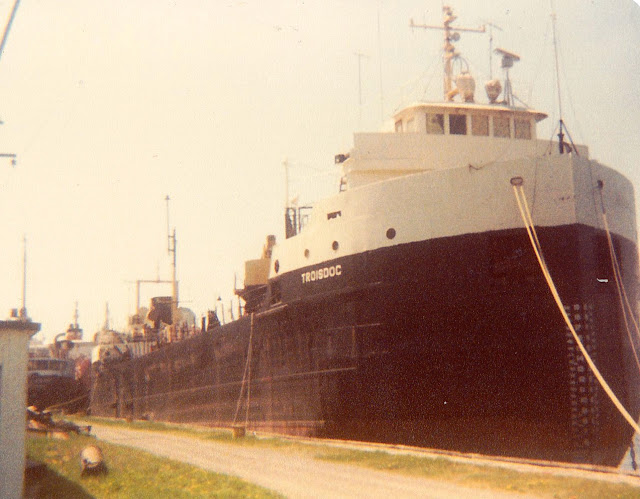***TO ORDER - please visit my Trains & Grains book blog
I'm proud to announce the completion of a two-volume set: Trains and Grains. Originally intended to fill only one book, the copious content rapidly overflowed the covers, necessitating two volumes! The two volumes complement each other but there is no overlap of content. Volume 1- Trackside Observations in Manitoba 1976-1986, includes photos, data and text showcasing the observations I made on several trips to Portage la Prairie, Manitoba. With Portage being one of the busiest railfanning locations in Canada, there was much CN, CP and of course VIA to observe! Table of contents:
I'm proud to announce the completion of a two-volume set: Trains and Grains. Originally intended to fill only one book, the copious content rapidly overflowed the covers, necessitating two volumes! The two volumes complement each other but there is no overlap of content. Volume 1- Trackside Observations in Manitoba 1976-1986, includes photos, data and text showcasing the observations I made on several trips to Portage la Prairie, Manitoba. With Portage being one of the busiest railfanning locations in Canada, there was much CN, CP and of course VIA to observe! Table of contents:
I was proud to include contributions from three experts in the field. Portage modeller Randy O'Brien contributed a fine foreword, while CN engineer Mark Perry shared an interesting article on what it was like to switch grain cars at elevators on the Prairies. Station expert and author Charles W. Bohi contributed an in-depth article on the nexus between trains, stations and the towns they served. A sample page of observations, listed by date, time, locomotives, cabooses and cars, with accompanying photos. Most of the Volume 1's 450+ photos are black & white.
Interesting freight cars observed and photographed, changes to the grain industry and the railways' involvement over the decades are included. Rosters and information on government cylindrical grain cars plus CN and CP grain boxcars add depth and context to my observations, as does a concise locomotive roster.
At 104 pages, with 70+ colour photos and colour covers, this perfect-bound book will be at home on the bookshelf of any railfan or modeller interested in just what was rolling on the Prairies only a few decades ago. There are eight colour pages showing some of the most colourful scenes, meets, locomotives and rolling stock.
The second volume Grain Elevators in Manitoba and Saskatchewan 1976-1986 covers grain elevators that were railway-served in Manitoba and Saskatchewan. I made a special effort to document the grain elevators that were in use during my visits. At the time, concrete elevators were literally on the horizon, with the brightly-decorated and proudly-owned wooden elevators on borrowed time. For many of the elevators I photographed, time has run out, and regrettably they are no more.
I was proud to feature contributions in this volume as well - a focused foreword from Winnipeg railfan and photographer Steve Boyko, as well as a second amazing article with accompanying photos from Charles W. Bohi, profiling his photography and many visits to document grain elevators in all three Prairie provinces. Table of contents:
Most pages in this volume showcase the 250+ black & white photos two per page, although there are some pages with more. Articles on grain elevator construction and the sweeping changes to the Canadian grain-handling industry at the time give depth and context to my observations. Sample pages showing Portage-area elevators:
and an impromptu visit to the Saskatchewan Wheat Pool elevator in Stranraer, including in-service interior photos:
While Saskatchewan Wheat Pool and Manitoba Pool Elevators tin looks good enough in black and white, it really takes colour photos to showcase the glowing green and radiant red of the Cargill and Pioneer elevators, among others. Volume 2 also includes an eight-page colour section and colour covers, totalling 70+ colour photos:
Each book is priced at $35, which also includes shipping anywhere in Canada. Payment can be made by cheque, money order or Interac e-transfer. I trust you'll find these books not only full of interesting photos of a bygone era, but with enough supporting data and text to really feel what it was like to be trackside, and in the shadow of these towering titans, over thirty years ago. And a good value for the price. For full ordering information:
Fellow Kingston railfan Paul Hunter picked up his copies already. First stop? Kingston Mills locks on the Rideau Waterway. New chair? Check! Scanner? Check! Coffee? Check! VIA40 P42 on the bridge and Trains & Grains boks in foreground? Check times three! Thanks, Paul!



































































